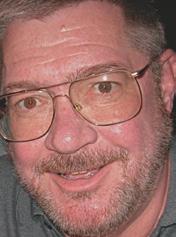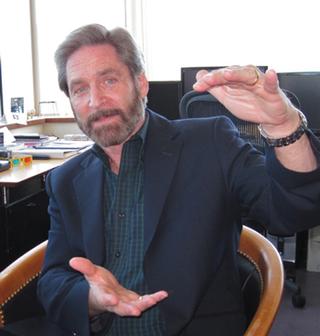Legend3D Steps Up 2D-to-3D

Jay Ankeney Walking into the facilities of Legend3D Inc. is like entering a darkened beehive that is buzzing with creativity. Legend3D is one of the premier 2D-to-3D conversion providers, having contributed their services to 3D films such as 2010’s “Alice in Wonderland” and “The Green Hornet,” and 2011’s “Transformers: Dark of the Moon.” But I was there to see a sample of their most recent conquest, the 2D-to-3D conversion of Tony Scott’s 1986 classic “Top Gun”, starring Tom Cruise that Paramount Pictures will be releasing to 3D theaters later this year.
WHERE IT ALL STARTED
Barry Sandrew, Ph.D., Legend3D founder, chief creative officer and CTO, lead me through the scattered archipelagos of desktops adorned with both active and passive 3D screens, which he explained were divided into workgroup areas he referred to as “studios.” It was an atmosphere that reflected the nurturing of creativity that seems to be Sandrew’s management style.
But, as the owner of more than 18 VFX patents and with 23 years of film and TV experience to build on, it’s interesting that Sandrew’s career path didn’t begin in film school. Rather, from 1978 to 1986 he was on the faculty of Harvard Medical School where he established the first Neuroscience Imaging Laboratory in neuroradiology.
Part of his medical research involved using color to make various parts of the brain more visible and that lead him to successfully co-found American Film Technologies (AFT) in 1985, which eventually created more than 80 percent of the colorized films worldwide.
Although he can’t reveal exact details, Sandrew’s color-conversion process uses masking to separate elements in an image so computer graphic artists could assign colors to them based on their grey scale.
By 2001 Sandrew had developed his proprietary digital color-conversion system and founded Legend Films, Inc., a studio that has monopolized the film colorization business.
Then in 2006, anticipating that James Cameron’s “Avatar” would jumpstart interest in 3D, Sandrew recognized his blackand- white segmentation process could be the foundation for a 2D-to-3D conversion system. It was used to convert 25 minutes of Tim Burton’s “Alice in Wonderland.” In July 2010, the organization was re-named Legend3D Inc. on its way to becoming the largest 2D-to-3D conversion company in the United States.
Kelly McGillis as Charlie and Tom Cruise as Maverick in the movie “Top Gun,” is currently available on Blu-ray and DVD.3D IS THE FUTURE
Sandrew is convinced 3D is the future of both big screen and small screen entertainment. “I’m 1,000 percent convinced that is going to happen,” he said. “And that definitely refers to both glasses-based and autostereoscopic 3D displays.” In fact, in his insightful blog (bsandrew.blogspot.com) Sandrew insists “3D is inevitable and unstoppable.”

As to the concern over needing glasses to see it, he wrote: “I believe it’s a mob mentality when it comes to negative feelings about the glasses.”
During a recent interview with radio technology guru Leo LaPorte, aka “The Tech Guy,” Sandrew had to smile at the way La- Porte was complaining about wearing 3D specs despite the fact he relies on prescription glasses all day to correct his strabismus (abnormal alignment) eye problem. The path to the 3D future, according to Sandrew, is simply custom-made 3D lenses.
But in order to fulfill the needs of ’round the clock 3D, a lot of legacy material, both feature film and TV, is going to need to be converted from its 2D origins.
“There are several ways to do this,” Sandrew explained. “The cheapest is to create individual flat planes, or cards, that use effects like shadowing to simulate 3D. But that produces a crude 3D effect.”
Slightly better than using the cards is “rubber sheeting,” which is like pushing your hand through a flexible barrier to create an image with depth. This process doesn’t require you to fill in the 3D areas that had previously been occluded by the 2D image, but the result does not produce the kind of separation that makes good 3D.
The most common 2D-to-3D approach is to use modeling projection in which you create a wire frame of all the objects in a shot, rotoscope the image elements and overlay them onto the model you’ve created. But this is complex and expensive and involves a lot of manual labor.
“The way we do it with our proprietary system based on masking produces an absolute separation between every object in a scene,” Sandrew continued. “There is a lot of neuroscience in it, extending even to creating deep reflections in people’s eyes. It’s a subliminal thing, but our process creates a more lifelike 3D visual impact.”
THE RESULTS
I witnessed the results when I was ushered into the state-of-the-art 3D screening room at Legend3D where Sandrew had his projectionist run a four-minute clip from their 2D-to-3D conversion of Paramount’s “Top Gun” and what I saw was spectacular.

Barry Sandrew, Ph.D., Legend3D founder Originally created to be shown at last year’s IBC convention in Amsterdam, I viewed the opening sequence of the first reel where F-14A Tomcats flown by “Maverick” (Tom Cruise) and “Goose” (Anthony Edwards) intercept some invading MiGs. The effect of the added Z-space was awesome and when this turbo charged sequence is shown on a full-sized 3D screen accompanied by blasting theatrical sound, this new look at “Top Gun” is going to blow 3D fans away.
The real surprise of the afternoon was seeing what Legend3D had done to film comedian Harold Lloyd’s famous scene from his 1923 comedy “Safety Last” in which the silent stunt comic finds himself hanging off a clock face high above a busy city street. Sandrew’s team had colorized it and converted the 2D footage to 3D for exhibition at a meeting of the International 3D Society.
I really hope that when “Top Gun” hits the big screen in 3D later this year, that sequence from “Safety Last” will be part of the pre-show. A colorized and dimensionalized movie from the silent era! What a wonderful modern age we live in.
Jay Ankeney is a freelance editor and post-production consultant in Los Angeles. Write him atJayAnkeney@mac.com
Get the TV Tech Newsletter
The professional video industry's #1 source for news, trends and product and tech information. Sign up below.
